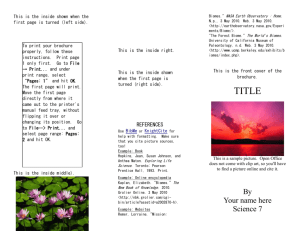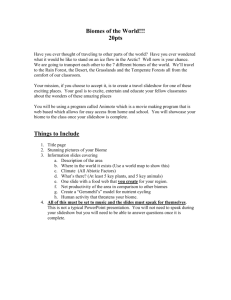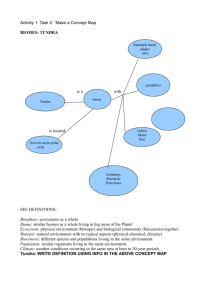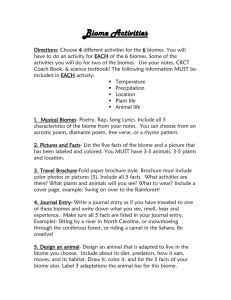Environments
advertisement
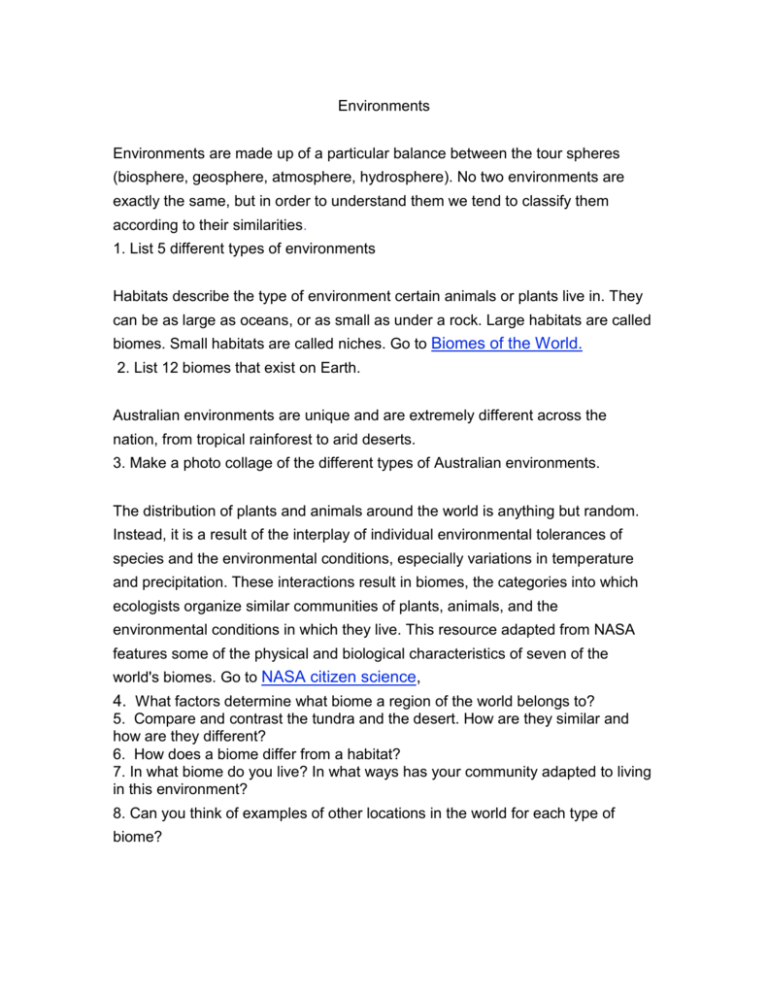
Environments Environments are made up of a particular balance between the tour spheres (biosphere, geosphere, atmosphere, hydrosphere). No two environments are exactly the same, but in order to understand them we tend to classify them according to their similarities. 1. List 5 different types of environments Habitats describe the type of environment certain animals or plants live in. They can be as large as oceans, or as small as under a rock. Large habitats are called biomes. Small habitats are called niches. Go to Biomes of the World. 2. List 12 biomes that exist on Earth. Australian environments are unique and are extremely different across the nation, from tropical rainforest to arid deserts. 3. Make a photo collage of the different types of Australian environments. The distribution of plants and animals around the world is anything but random. Instead, it is a result of the interplay of individual environmental tolerances of species and the environmental conditions, especially variations in temperature and precipitation. These interactions result in biomes, the categories into which ecologists organize similar communities of plants, animals, and the environmental conditions in which they live. This resource adapted from NASA features some of the physical and biological characteristics of seven of the world's biomes. Go to NASA citizen science, 4. What factors determine what biome a region of the world belongs to? 5. Compare and contrast the tundra and the desert. How are they similar and how are they different? 6. How does a biome differ from a habitat? 7. In what biome do you live? In what ways has your community adapted to living in this environment? 8. Can you think of examples of other locations in the world for each type of biome?



